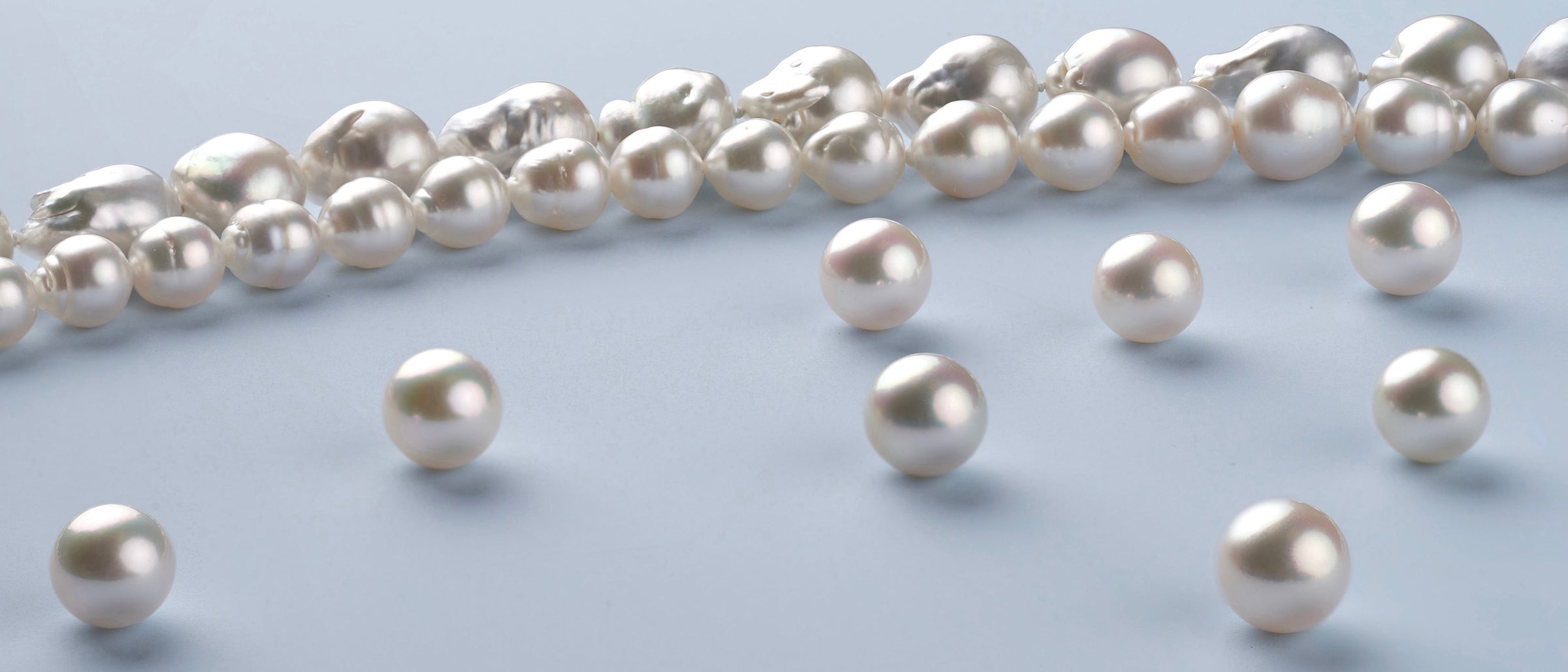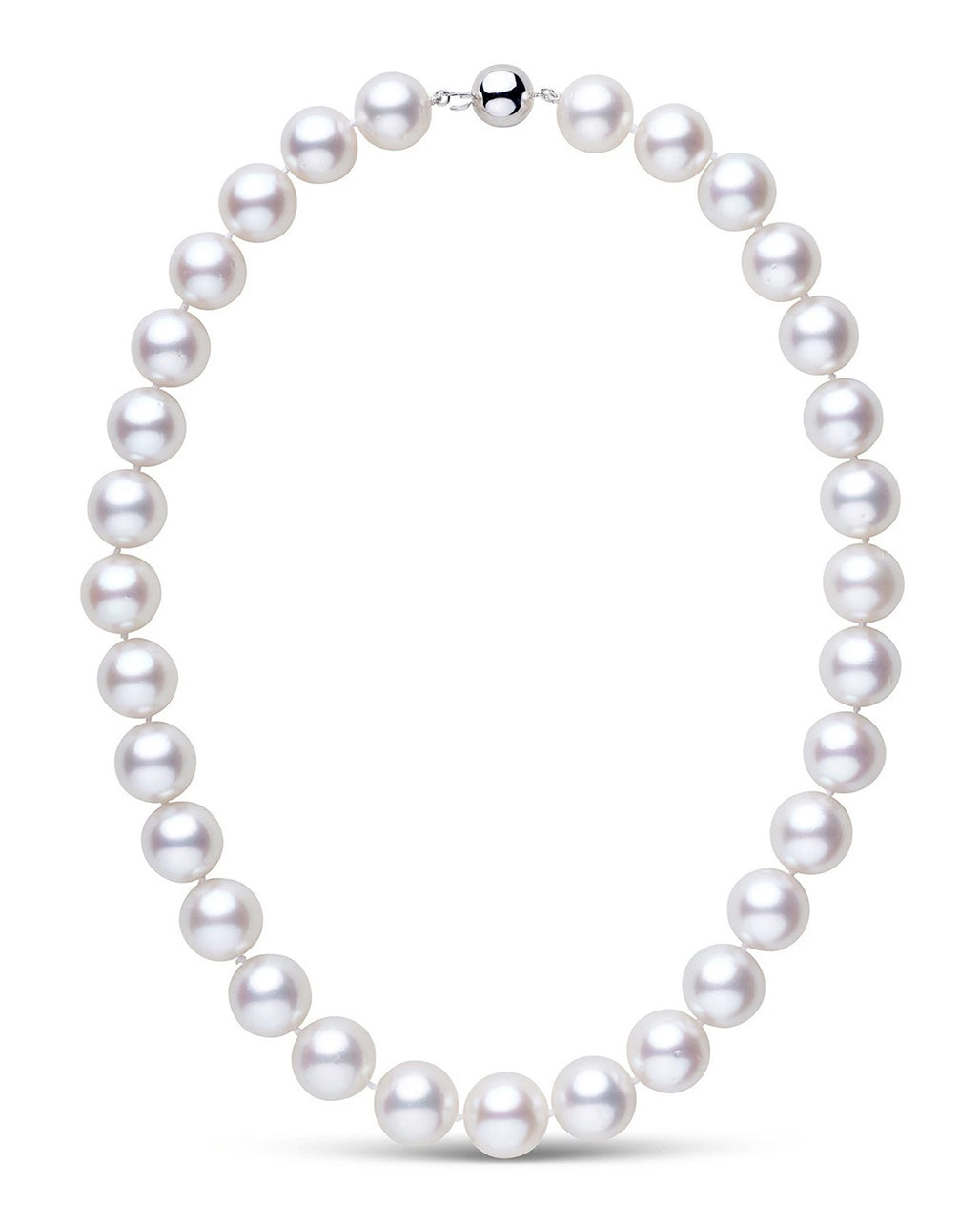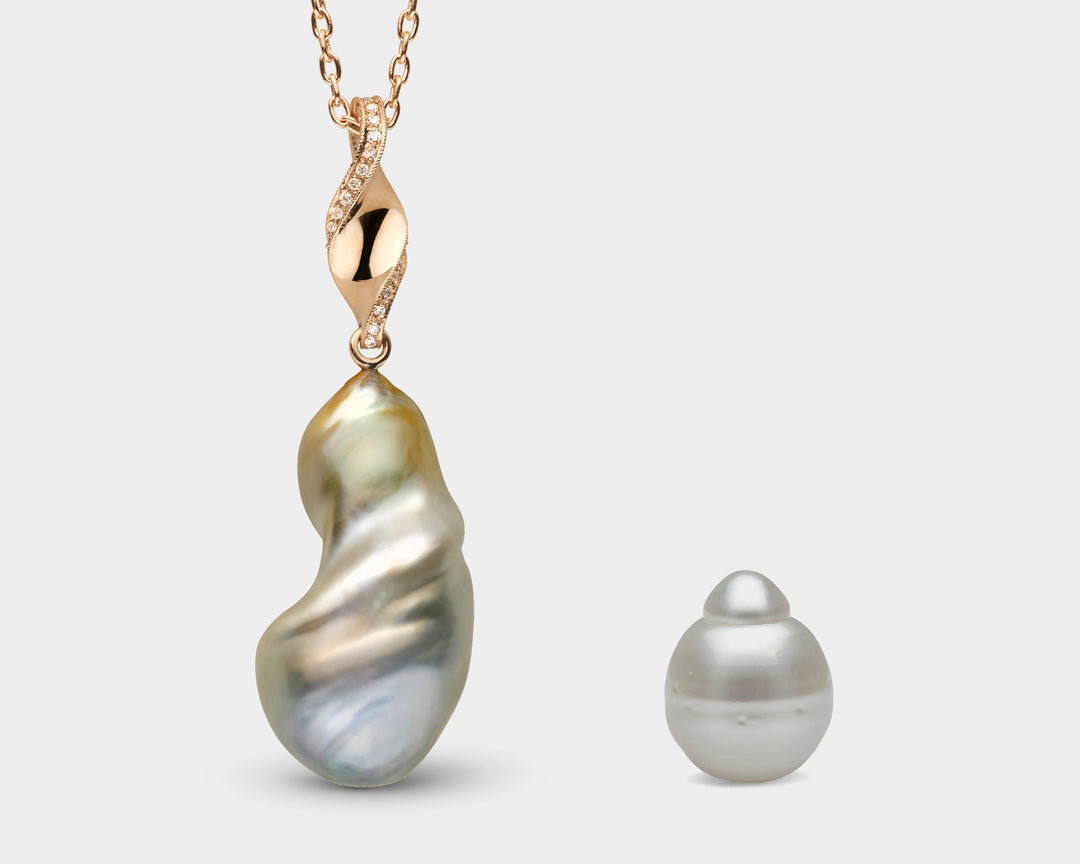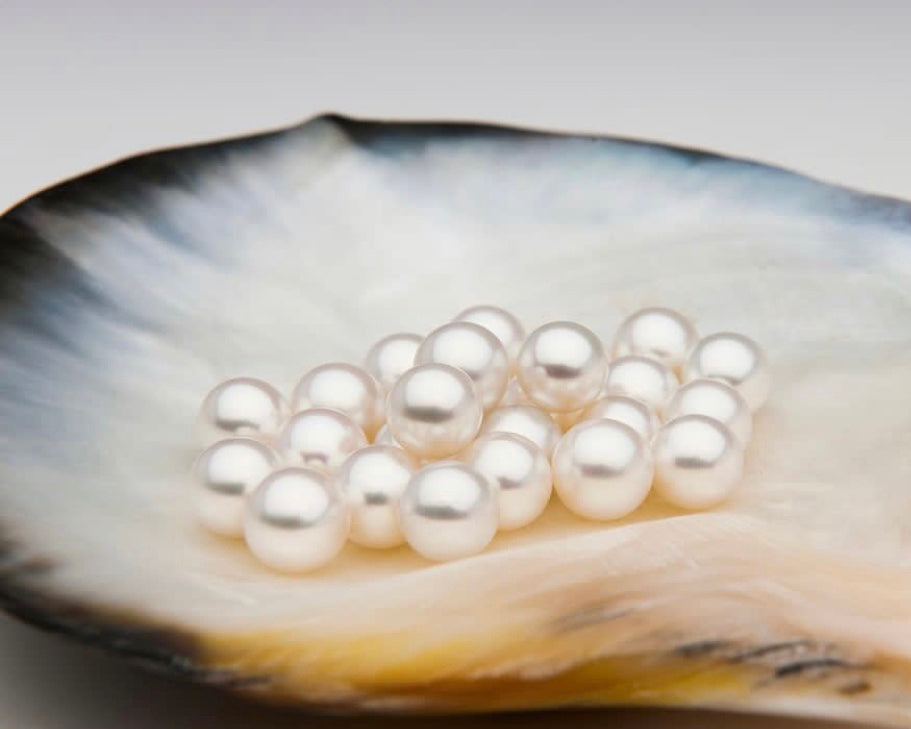
Their large size, limited culturing area, and extended growth period all combine to make South Sea pearls the rarest of all pearl types. Found in colors ranging from optic white to a deep, honey gold, these pearls are prized by collectors and designers alike. The luster of South Seas pearls, whether white or golden, is soft and luxurious. Only a small percentage of South Seas are spherical and as such, full strands of matched pearls are extremely rare.
How do they compare to other types of pearls?
South Sea pearls are generally much larger than other pearl types and have a unique luster quality – a soft reflection due to the large aragonite platelets that make up the pearl. They also have the thickest average nacre of all cultured pearls. These factors make South Seas both distinctive and valuable. South Sea pearls have the highest value and command the highest prices of all types of pearls.
As with other saltwater oysters, the South Sea pearl oyster is bead-nucleated. However, the growth period is approximately 2-4 years, unlike the akoya pearls, which develop in less than half that time. Being a delicate organism, this type of pearl oyster is particularly susceptible to disease and stress, which is one reason why the culturing area for South Seas pearls is quite limited. Attempts to expand South Sea pearl farming have met with little success because the oysters do not thrive outside their native, natural environment.

The more you know...

What colors, shapes, and sizes are available?
South Sea pearls can be found in the range of 8 to 20 mm, with the average being 12 mm. Although extremely rare, some pearls have been found larger than 20 mm.
Only 10-30% of each harvest will be round or near-round, so those strands carried by Pearl Paradise are truly a rare commodity.
Baroque and drop-shapes are often used in high-end designer jewelry to showcase their unique shapes and luster. This also makes the South Sea pearls available at a variety of price levels.
Silver-lipped South Sea pearl oysters generally produce pearls in the white, silver, aqua and blue family of overtones. The gold-lipped variety produces the cream, champagne, and deeper golden variety.
Since the natural colors of South Sea pearls are so rich and beautiful, after harvesting they are merely washed and buffed to remove any residue and bring out their natural glow.
How rare and valuable are they?
White South Sea pearls generally retain the highest value of all pearl types. Because of their scarcity and unusually large size range, they command much higher prices.
Depending on the quality, shape, and size of a strand, prices can be well up into the range of $10,000 to even $1,000,000 and more.
Fine, baroque shapes are often used individually in unique jewelry pieces which can make them more affordable while still showcasing their natural beauty.

Where do they come from?
The majority of white South Sea pearls are cultured along the northwest coast of Australia.
Pearl oysters in Australia are predominately collected from the wild, with hatchery-bred oysters supplementing the wild stock. Wild oysters are mixed with the hatchery stock to keep the supply healthy and plentiful, and all sources are closely monitored by government organizations to guarantee their long-term well being.
Adding to their mystique is a colorful past, beginning at the end of the 19th century. In the 1850's, the rough-and-tumble city of Broome, on the northwest coast of Australia, fast became the commercial center for South Sea pearls, despite its seedy reputation. Large-scale commercial pearl culturing began in earnest during the 1950's and has grown steadily since.
Today, Broome still dominates the white South Sea pearling industry and has become a beautiful, modern city reflecting the high-tech nature of the business.









